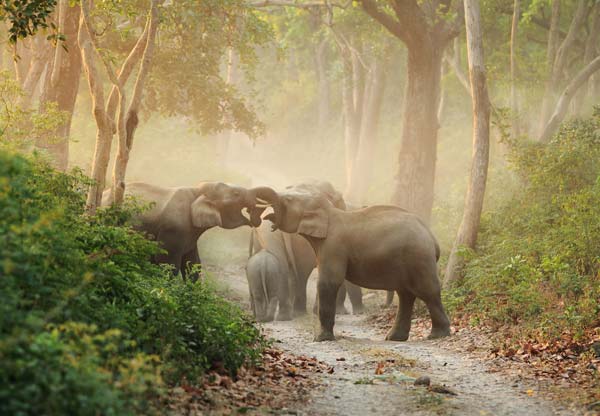Ten Ways to Save Elephants

VIVEK MENON, conservationist extraordinaire, Executive Director and CEO, Wildlife Trust of India, and Advisor, International Fund for Animal Welfare (IFAW), lists 10 ways to save the largest land animal on planet earth.
Elephants have lived through millennia. They, and their now extinct proboscidean ancestors, have undergone droughts, famines, floods, earthquakes, prehistoric hunting, capture, enslavement, tribal conflict, modern slaughter and climate change. They have spanned the earth from the humid swamps of Al Fayyum in Egypt, through the deserts of the Sahel and Namib, through most of today’s temperate Europe and tropical Asia. They must, as survivors, know a million ways to defeat adversity. I have no access, however, to their wisdom and must confine myself to what we, another species with a very different kind of giant footprint, think they want, believe they must feel or know they need in order to survive. These imperatives are vast in scope and broad in concept but are the most critical. For if these are not done by us, then, three, or maybe four species of the world’s largest land creatures will no longer roam terra firma. For them, and for us, these are the top 10 actions we must take to protect the elephant.
Vast and connected homelands
It is only fair that the largest creatures on land require a wee bit of undisturbed space to park themselves and lead their incredibly complex social lives. Given their vast size, they need large quantities of food, and this inevitably translates to vast homelands. Luckily, they are not very selective in their forage and eat a number of plant species ranging from coarse grass to tender shoots. Their herds need to be mapped and adequate (this word is so geographically tied-down that I am not attempting an approximation) habitat must be protected as elephant reserves in order for them to roam. The elephant is not selfish in this want, for under the canopy of its mega charisma can live a million other beasts, large and small that share temporal and ecological niches with it. These vast savannah-woodlands could also be a nation’s natural tourism basket in which humanity can view these gentle giants and other creatures in the wild. These would also be, due to their size, the source of water, air and flora that have their own importance and implications for our natural world. Elephant homelands must necessarily be interconnected and to know why, we must move on to the next point.
Read the full article by subscribing to the print magazine or the digital edition.
